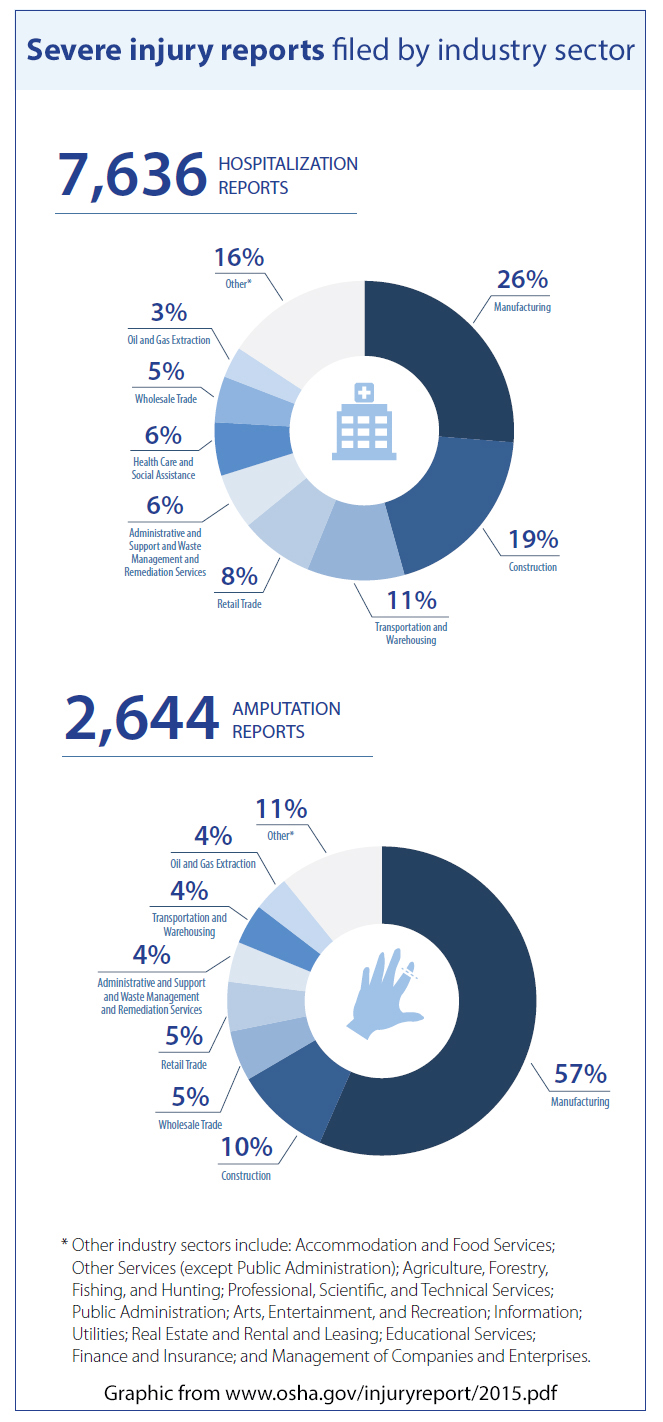OSHA Takes Severe Injury Reporting Seriously, You Should Too
The first year of OSHA’s Severe Injury Reporting Program is a success but smaller employers need more outreach and education on the new requirements, according to a new report from OSHA. The report warns now that the program is in its second year, OSHA is more likely to issue citations for non-reporting and the penalty has increased. Some employers may fear that reporting severe injuries will lead to inspections and citations, but in response to 69% of hospitalization reports OSHA simply asked employers to conduct their own incident investigations and propose remedies to prevent future injuries. OSHA instituted the severe injury reporting requirements to:
- Enable the agency to better target compliance assistance and enforcement efforts to places where workers are at greatest risk, and to;
- Engage more high-hazard employers in identifying and eliminating serious hazards.
In a previous post, MEMIC’s John DeRoia described the severe injury reporting requirements which include employers informing OSHA of any work-related amputation, in-patient hospitalization, or loss of an eye within 24 hours of the incident and emphasizes reporting a fatality within 8 hours.
In the first full year of the reporting program, employers notified OSHA of 10,388 incidents involving severe work-related injuries, including 7,636 hospitalizations and 2,644 amputations, which amounts to 30 work-related severe injuries per day. (These figures were collated from federal OSHA state reports and do not include injury statistics from states that administer their own safety and health programs.)
The Year One of OSHA’s Severe Injury Reporting Program: An Impact Evaluation report written by Dr. David Michaels, Assistant Secretary of Labor for Occupational Health and Safety, cites several interesting cases where employers working with OSHA made safety improvements to prevent future injuries through engineering controls, enhanced training, and design changes.
Dr. Michaels wrote in the report, “OSHA will continue to evaluate the program and make changes to improve its effectiveness. We are also seeking new ways to make sure that small employers know about their reporting obligations and the resources available to them.”
Online safety resources available to MEMIC policyholders include access to the Safety Director with all of its features, workshops and webinars, and a newly updated video lending library.


